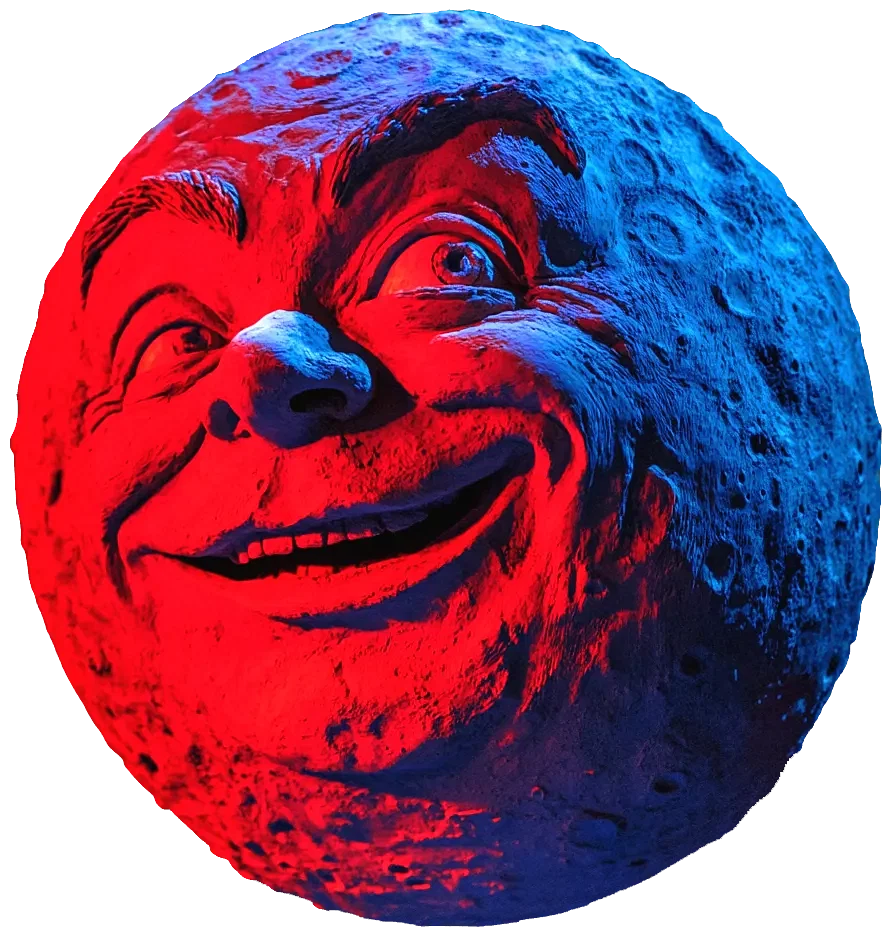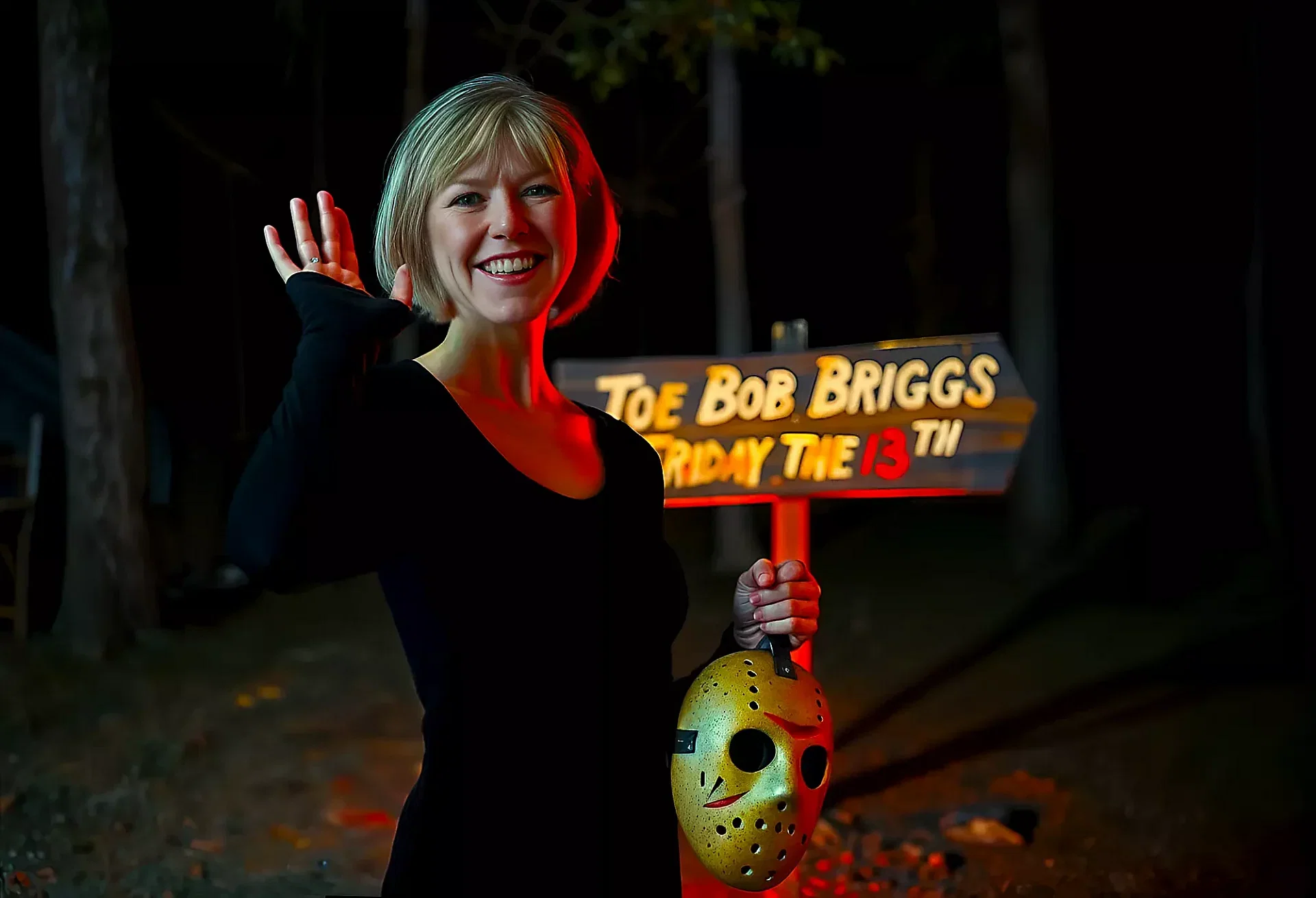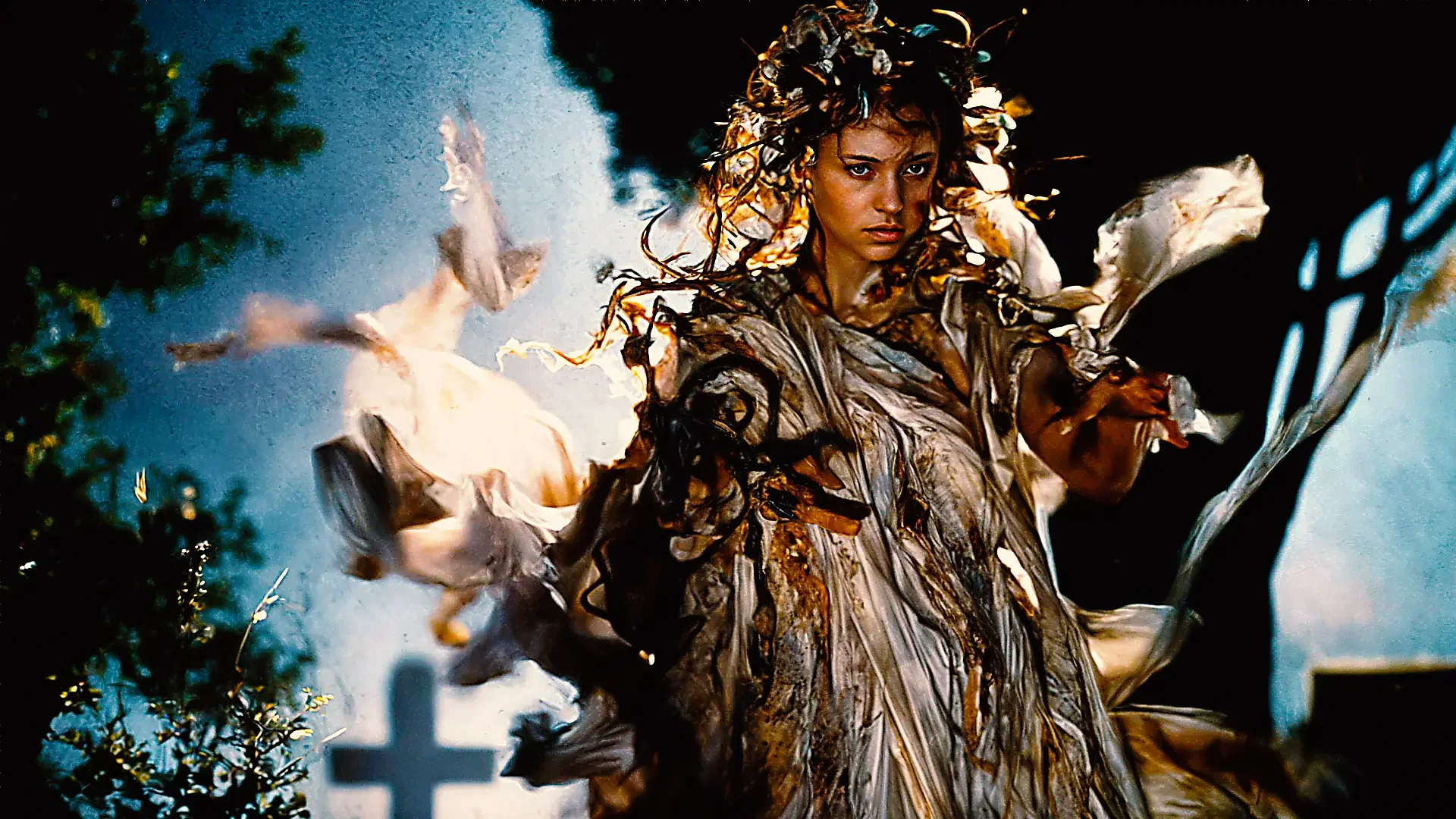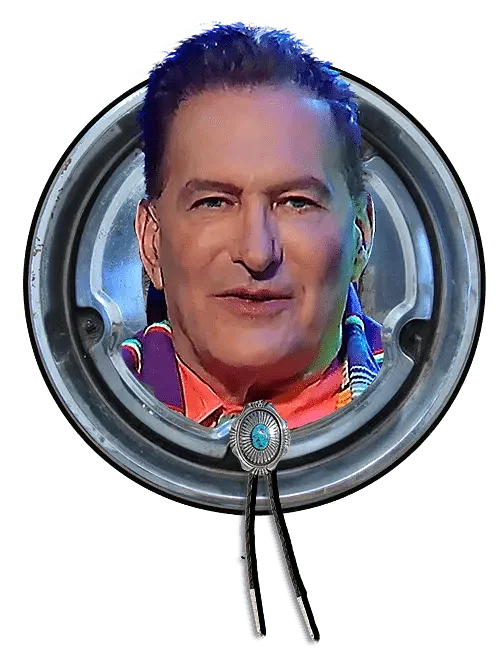Art by T.J. Denton (@TDenton_1138 on Twitter)
Sad and happy. Dark and light. Big and little. East Coast and West Coast. “Indie” and studio. Slimy tongue boobie licking and aardvarking against a NYC monument.
Surely never has a more stark listing in contrasts been compiled in the annals of American film analysis before now, and we have the second-to-last episode of The Last Drive-In (don’t worry, there’ll be more — as if there was any doubt) to thank.
Horror and exploitation filmmaking both have such a broad umbrella of possibility under them that even the divergent styles of East and West Coast exploitation filmmakers produced gems in the period of great distribution disruption in the industry that was the 1990s.
There to tell us all about it how they did it were two veteran outsider filmmakers: Charles Band, director of Head of the Family, the broad, snappy humorous tale of split personality, a woman unafraid to pop her top and a creature whose favorite indie band was most likely Big Head Todd and the Monsters, and Larry Fessenden, writer/director and star of Habit, the vampire movie that portrays one man’s deadly serious personal decline once the wrong party acquaintance sinks her teeth into him.
Both filmmakers took their own winding paths to getting their projects seen — Fessenden actually went to jail for his — proving that there’s no one right way to do your flick. But step one is getting it done. And while karma or fate worked out well for both Band and Fessenden in that Band and Full Moon were able to weather that massive disruption when the video stores went bye-bye and Fessenden was able to pay his crew after cajoling them to work gratis on Habit, there’s never a guarantee, and it’s always a risky business being creative.
One thing both creators had in common was that they put themselves out there and set themselves up for success. Band spent a ton of time brainstorming oddball creative ideas with just a title and a poster image (no stars attached), got his rear in front of the money folks, presold and then made the flicks. Those are some cajones with a capital J. Fessenden played more of the long game — the germ of an idea that was a student film morphed (or mutated, if you want to be on brand) over a decade and a half, he networked his cajones (with a capital J) off to get folks he could trust, led by example when production time rolled around and prepped with cast and crew until they could prep no more.
If you have the passion, REALLY want to do something and make the time, stuff’ll happen.
And speaking of stuff, Head of the Family starred Jacqueline Lovell, who was often on late-night cable on Cinemax or elsewhere, and she had to deal with that technically demanding slime tongue vs. garbonza scene mentioned way back in Paragraph 1. A lot has happened since then, so just as a reminder, here are the Drive-In Totals for Band’s flick that I’m betting might have been “inspired” by the Marvel villain M.O.D.O.K. who had some gratuitous cranium. (Also — was it me or was Otis a super-sized George Kennedy?)
Regarding the contrast of a West Coast vs. East Coast exploitation flick, of which Head is a great example, Joe Bob laid out the characteristics used by the California folks, especially Band himself:
- Brightly lit for the most part;
- Light-hearted music and humor co-exist with snappy banter and other stylistics;
- There’s a creature of some sort;
- There’s a littler creature of some sort;
- “Boobies!”
- A great poster to promote it;
- An action figure tie-in, very likely to be associated with No. 3 and 4 listed above.
And sure, times have changed a bit and some of the more nekkid aspects of the outsider exploitation films have been softened or, let’s face it, omitted by other filmmakers, Band’s been carrying the torch for 50 years, and we’re hoping he keeps going.
Back to Habit — Fessenden’s grim-and-gritty New York vampire flick by way of Taxi Driver and John Cassavetes. Fessenden kept his budget low and his preparation high in order to construct his vision of horror intruding gradually into one’s guy’s life even as he ignores all the obvious signs as seen by these totals:
Who knew that being mugged in the Big Apple and some kooky relationships could result in the one of the most realistic vampire flicks ever made? A polar opposite as far as tone and style goes from the first feature, the main thing to keep in mind when making an East Coast-style exploitation flick is this: You gotta show the garbage in the streets, the chips in the paint job and it, always, always has to make the audience feel WORSE than they did when they sat down.
One week to go, and then it’s Jamboree time!









